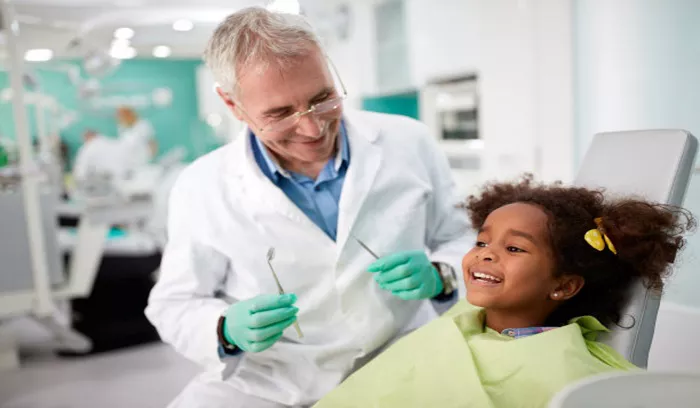Choosing the correct toothbrush for a child is a crucial part of maintaining their oral health. A proper toothbrush can effectively clean teeth, reach all areas, and be comfortable for the child to use. Different factors need to be considered to ensure that the toothbrush is suitable for a child’s specific needs at various stages of their dental development.
Age – related Considerations
Infants (0 – 2 years)
For infants, a very soft – bristled toothbrush or a finger – brush is often recommended. Their teeth are just starting to erupt, and their gums are delicate. A finger – brush, which can be worn on the parent’s finger, is gentle on the gums and can be used to clean the few teeth that have come in. These brushes are usually made of soft silicone and are easy to use. When choosing a regular toothbrush for infants, look for one with extra – soft bristles. The head of the toothbrush should be small enough to fit easily into the baby’s small mouth. For example, a toothbrush head that is about the size of a pea or a little larger is appropriate.
Toddlers (2 – 5 years)
Toddlers’ teeth are more developed, but their mouths are still relatively small. A toothbrush with a small head and soft bristles is ideal. The head should be able to reach all areas of the teeth, including the back molars. At this age, children may start to brush their own teeth, so the handle should be easy for them to grip. Some toothbrushes for toddlers have a chunky handle, which makes it easier for their small hands to hold. Also, look for toothbrushes with fun designs or characters on them. This can make brushing more appealing to toddlers and encourage them to brush regularly.
Children (5 – 12 years)
As children get older, their teeth become larger and more complex. A medium – sized toothbrush head with soft to medium – soft bristles can be used. The bristles should still be gentle on the teeth and gums but be able to effectively remove plaque. By this age, children may be more interested in electric toothbrushes. Electric toothbrushes can be a great option as they often do a better job of cleaning teeth than manual ones. However, it’s important to choose an electric toothbrush that is designed for children, with features like a smaller head and a lower vibration intensity if necessary.
Bristle Characteristics
Softness
Soft bristles are essential for children’s toothbrushes. Hard bristles can damage the enamel on children’s teeth and irritate their gums. Soft bristles are gentle enough to clean without causing harm. They can reach into the grooves and crevices of the teeth to remove plaque and food particles. Over time, hard bristles can wear down the enamel, making the teeth more susceptible to cavities.
Bristle Density
The density of the bristles also matters. A toothbrush with evenly spaced and moderately dense bristles is a good choice. If the bristles are too sparse, it may not clean effectively. However, if they are too dense, it can be difficult to dry the toothbrush properly after use, which can lead to the growth of bacteria.
Bristle Shape
Some toothbrushes have angled or tapered bristles. These types of bristles can be beneficial as they can reach into hard – to – clean areas, such as between teeth or at the gum line. For example, a toothbrush with bristles that are angled towards the gum line can help to clean the area where the tooth meets the gum more effectively.
Handle and Design Features
Grip – ability
A good – grip handle is important for children. As mentioned earlier, for younger children, a chunky or textured handle can make it easier for them to hold the toothbrush. For older children, a handle that is ergonomically designed can provide a comfortable grip during brushing. This helps to ensure that the child can hold the toothbrush firmly and brush all areas of their teeth without dropping it.
Design Appeal
Toothbrushes with appealing designs can encourage children to brush. This can include colorful patterns, popular cartoon characters, or fun shapes. For example, a toothbrush in the shape of a favorite superhero or a princess can make brushing seem like a more exciting activity. Some toothbrushes also come with built – in lights or sounds, which can add to the novelty and make brushing more enjoyable for children.
Other Considerations
Fluoride – containing Toothbrushes
Some toothbrushes come with a fluoride – containing bristle or a fluoride – impregnated handle. Fluoride helps to strengthen the enamel of the teeth. While these toothbrushes can be a good addition to a child’s oral care routine, it’s important to ensure that the amount of fluoride is appropriate for the child’s age. Too much fluoride can be harmful, especially for younger children.
Replaceability
Toothbrushes should be replaced regularly. For children, it’s generally recommended to replace the toothbrush every 3 – 4 months or sooner if the bristles become frayed. Some toothbrushes are designed to make it easy to tell when it’s time to replace them, such as with a color – changing indicator on the bristles.
Conclusion
In conclusion, choosing the right toothbrush for a child at Manor Children’s Dentistry requires careful consideration of age – related factors, bristle characteristics, handle and design features, and other aspects. By selecting a toothbrush that is appropriate for a child’s needs, parents can help to ensure that their child’s teeth are effectively cleaned and their oral health is well – maintained.
Related topics:

